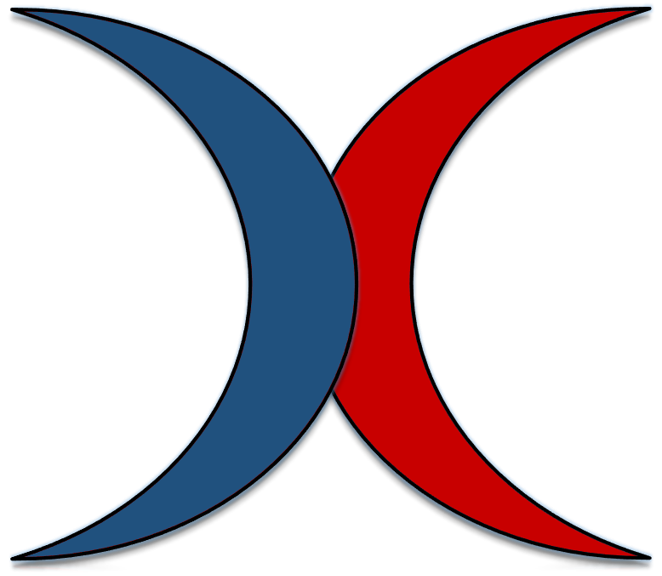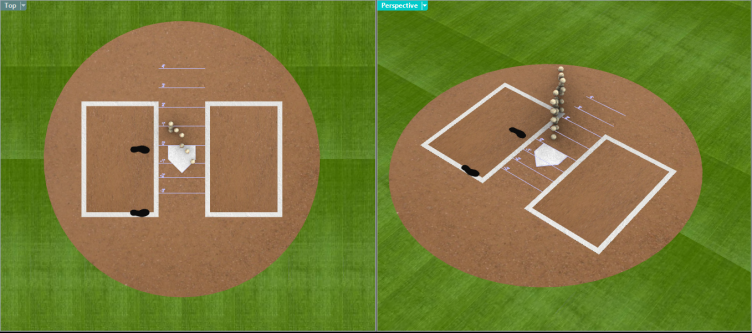
Swing Decisions and Contact points
By Ken Cherryhomes
This article is a transcript of my video discussing timing, contact points, and contact &timing adjustments.
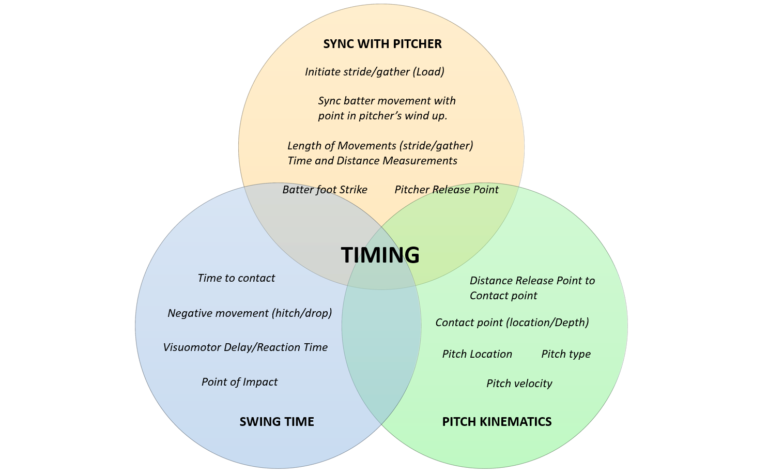
I’ll begin with a detailed explanation of my 3-2-0 drill. Although I have described this drill before in other discussions, starting off with this will offer some contextual background to things discussed later in this article.
3 –2 –0 drill
This is the drill I created to practice timing and contact points, my 3-2-0 drill. It’s based on three universally recognized contact points, belt high, outside, inside and middle.
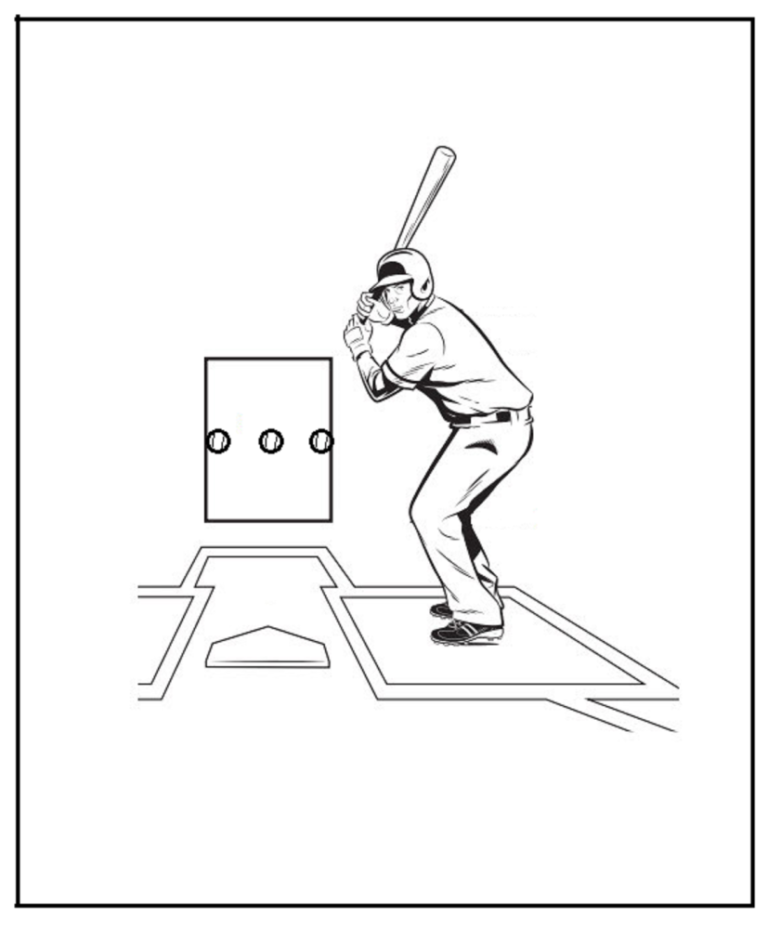
For simplicity, have the batter set up in the box so when they stride, their foot comes down equal to the front edge of the plate. This will help you with identifying where the contact points are, in a familiar setting, though this will be the last time your batter will be looking at the plate.
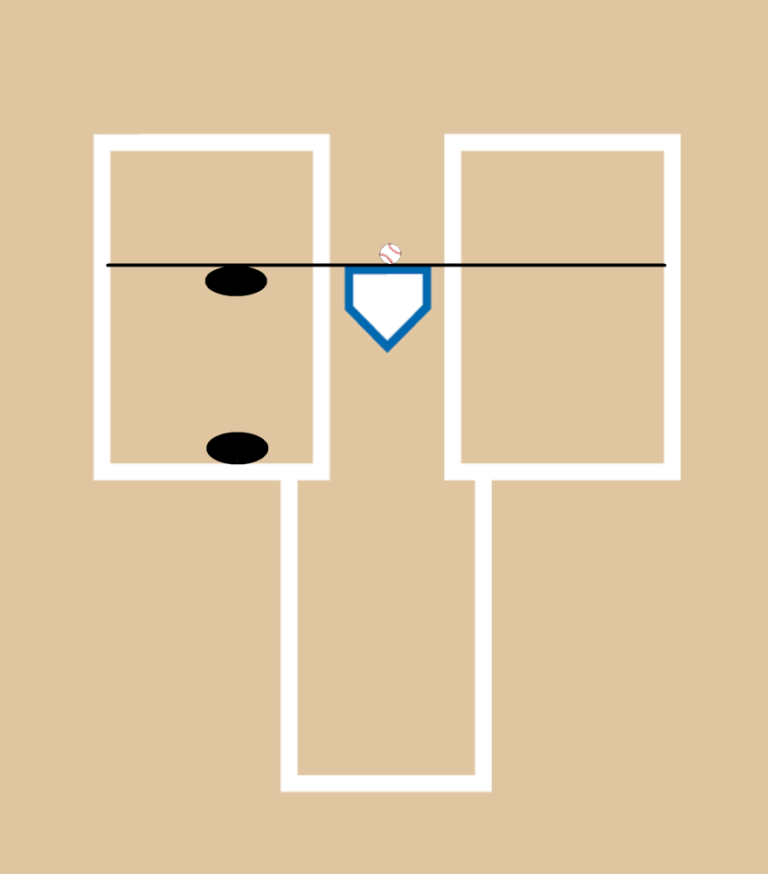
You can place 3 balls on the ground, one in each location, or you can move a tee around so you can discuss the batter’s physical relationship with those collision points. The batter’s front foot is used as the fixed measuring point, which we will discuss in great detail in later segments of this article
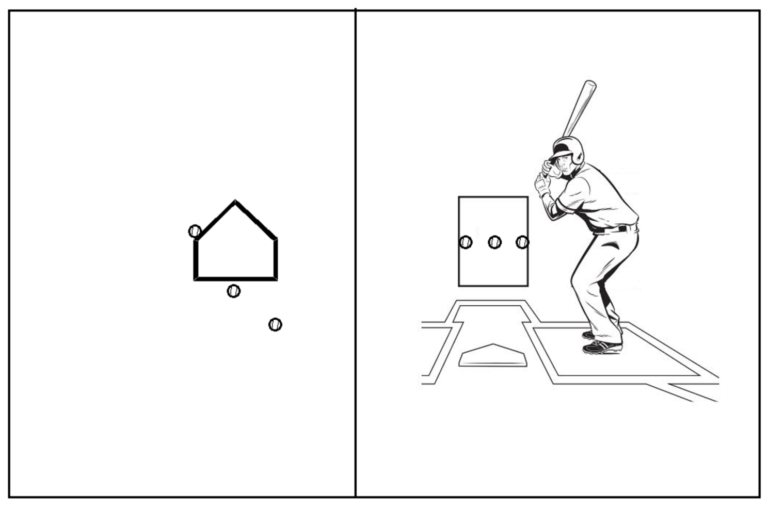
You’ll be doing some short toss work, throwing to three different locations, to teach your hitters the basics of timing, contact points and how to make timing decision adjustments.
Start with the middle to prime the batter, getting the batter and yourself loose, orienting to the speed that you’re throwing, and the batter’s swing speed. Try to be consistent with your pitch speed for this drill.
For this to work, you’ll need to have a decent intuitive sense of your batter’s bat speed so you can match a pitch speed to work with your chosen measurements. I use 2-ft over the middle, 3-ft for inside and 0-ft for the outside.
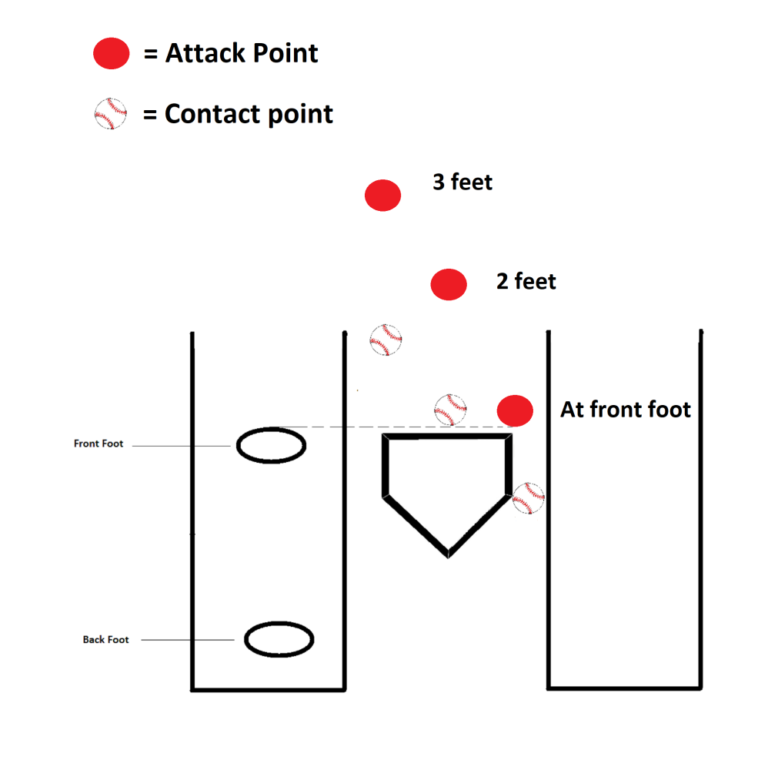
These distances are all measurements relating to the batter’s body part closest to the incoming ball: their front foot, not the plate. You can throw harder and extrapolate the attack measurements, the contact points will still be the same.
I keep it slow to reduce margins for error. This drill is intended to teach the hitter how to hit to all fields without changing their body position, intent, swing shape or swing direction- and how to make timing adjustments.
I hypothesize the batter is using three of their perceptual senses: Visual perception, universal gravitation, and proprioception. I will expand on visual perception and universal gravitation later in this video when I discuss the tau effect and inertial frames of reference.
You’re going to have to control the speed of the ball, so the ball arrives at a contact point the same time the barrel of the bat arrives. The speed that you’re throwing is going to get the ball to that point equal in time- to the time it takes this hitter to swing to that point.
Start out with the middle pitch, then eliminate the middle pitch quickly from the drill because it’s easy to hit up the middle, this pitch offering optimal space and comfort to hit.
When I’m sitting a short distance away behind an L screen, if I throw 5 pitches in different locations to my batter, I expect them to barrel four of them accurately to their appropriate fields, because I’m not challenging them with high velocity and I’m not trying to get them out.
In this drill, begin by telling the batter where the pitch is going to be, and when, at what distance, they should attack it, taking them from guess to precision. They shouldn’t make any mistakes.
Instruct the batter to take their normal swing, swinging as though they’re driving the pitch up the middle, but with different timing. Throw 5-pitches, telling them “Outside, zero feet”.
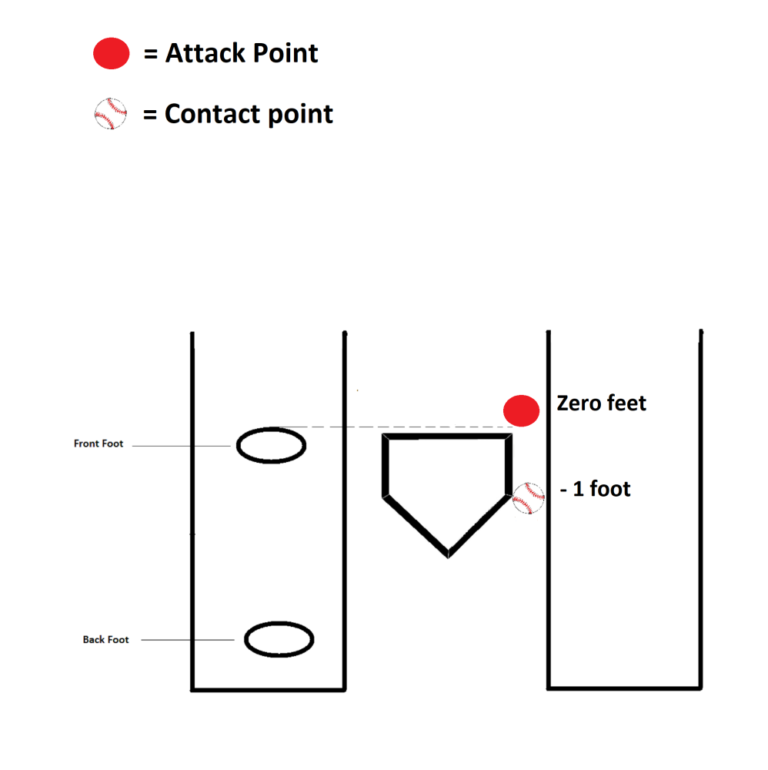
Rest a moment then throw 5 pitches, instructing them “Inside, 3 feet”
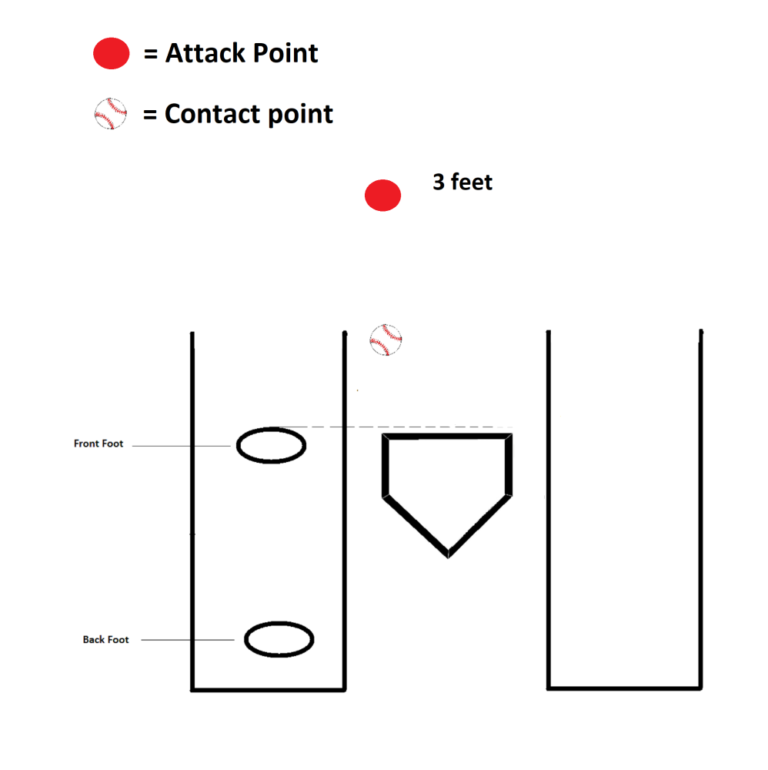
Rest again. Then throw 6 pitches, every other pitch inside, outside, issuing the batter the appropriate measurement “three feet inside, zero feet outside before releasing each pitch.
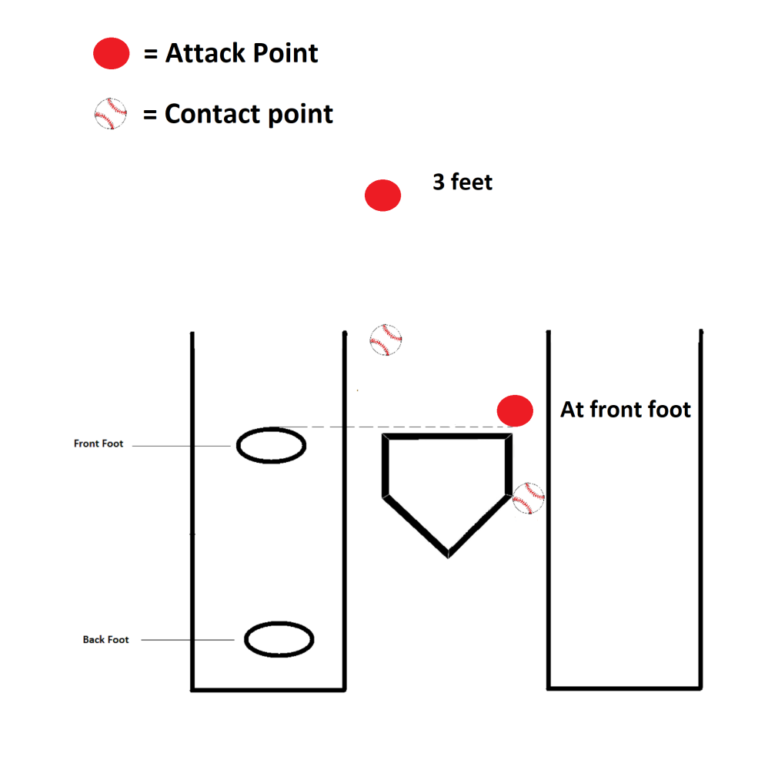
Now, tell the batter you are going to throw to random locations without telling them which or the measurement. Remind the hitter of the attack distance measurements for each, 3-2-0.
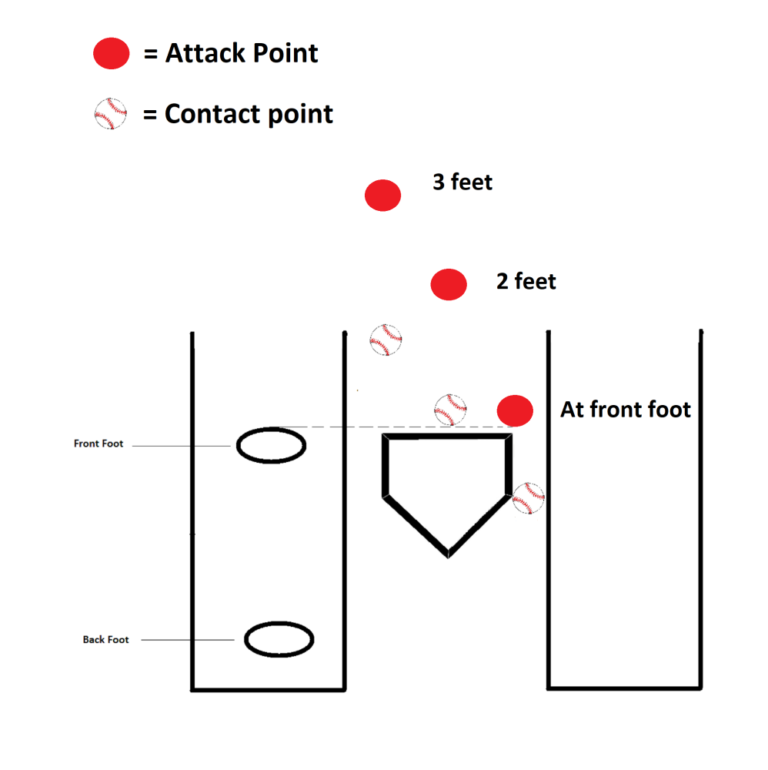
You’ll find a hitter who could not hit to all fields, in a matter of a few minutes, now can hit an outside pitch to the opposite field and an inside pitch to a pull field very easily.
Adjustments
If the batter were to make a mistake, since they know
A. what location the pitch was.
B. The contact point depth for that pitch and
C. the distance they should have attacked in order to hit the ball to its appropriate field, inside: pull, middle: center and outside: oppo, they can now make measured adjustments.
Example: If the batter pulled an outside pitch, they attacked the ball 3ft too early. Contact was made 1-ft in front of their front foot, when contact should have been made around 1ft behind their front foot and for the velocity they’re practicing, the attack distance should have been zero feet from their front foot, but contact was made 1ft in front of their front foot. Their contact was 2ft early but their decision to swing was 3ft early.
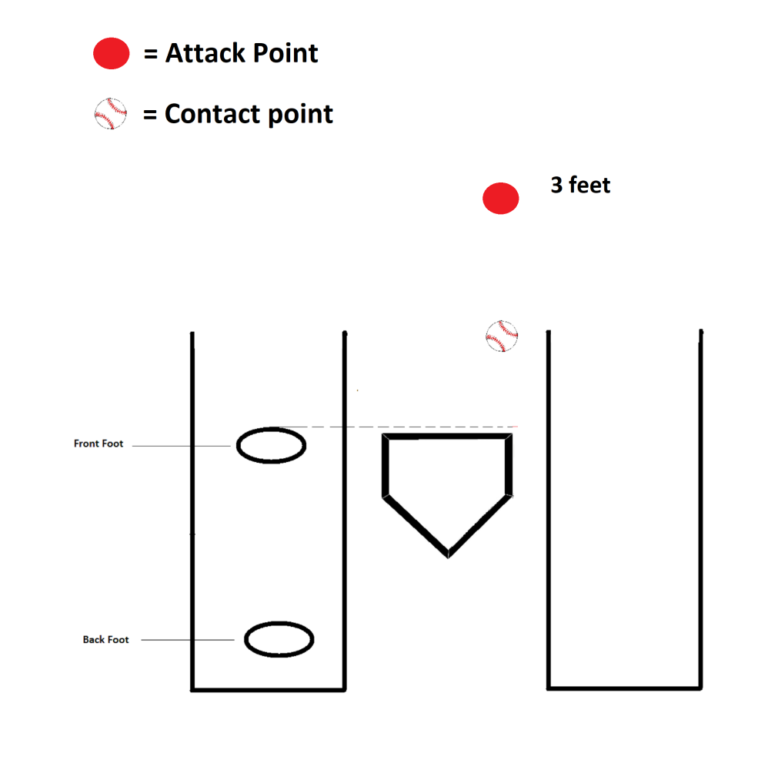
When your hitter is late or early, stop. Ask them the location of the pitch. Ask them what field they hit the ball to and what field should it have gone to. Then ask them by how many feet was their swing decision off by.
Extrapolating
I’m often asked, how can I practice this method at game speeds and game distances? At full speed and distance, it’s a matter of practicing, analyzing contact and comparing where contact was made to optimal points: points determined for each pitch location that result in the highest possible exit velocity and most consistent favorable outcome: a safe hit or home run.
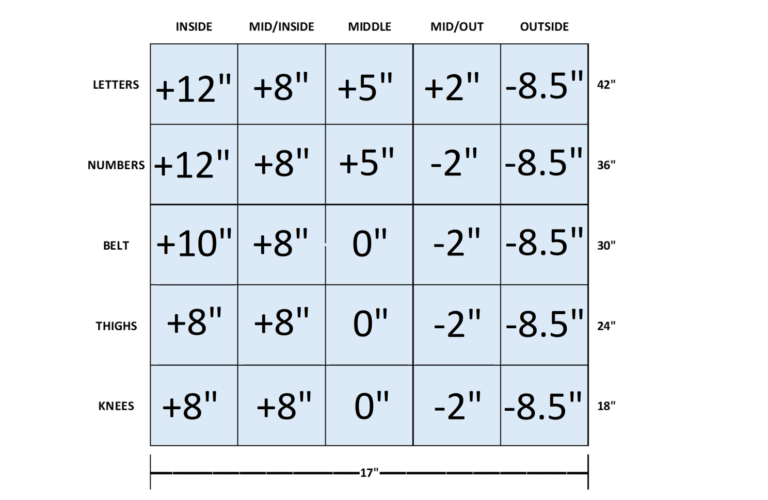
This can be a slow learning method riddled with guesses, and failures.
When success is made, a reference point is established and is stored in our memory to be used in future attempts with similar locations and velocities. This is how Mike Trout and Ted Williams along with everyone else learned how to time pitches. It’s called trial and error. Batting against game speeds at game distances is really the only way to create a timing memory.
Because I understood contact points and how to measure time over distance, I knew I could solve this problem mathematically but how could I possibly know when the hitter told themselves when to swing at a 92mph pitch outside, middle or inside? I could determine how late or early they were, since the contact points are known- but I couldn’t help them much with their decision distance, until I built technology to solve that problem for me.
First, I built devices to capture and store a batter’s swing time to all 25 optimal contact points.
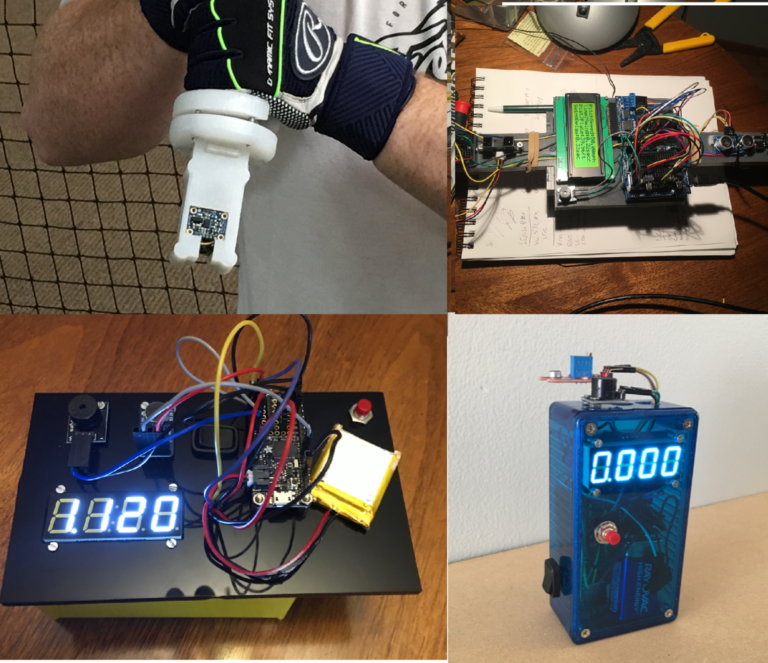
Then I programmed software with pitch release and ball flight distances to each optimal contact point.
With my batter now in the box ready to hit, I would capture the live pitched ball’s velocity at release with another device I’d built.
A signal is issued, same as you instructing the batter 3-2-0 before your short tosses, but against high velocities, factoring in the captured pitch kinematics, the batter’s visuomotor delay, or reaction time, and their bat swing time, solving the “when to swing” problem for the batter.
Here, I’m changing locations inside, outside, and middle, without telling the batter where the ball is being delivered, just like my 3-2-0 drill. The machine was set to 92mph. Once the ball is captured, its velocity degradation considered over distance to predetermined contact points, combined with the batter’s swing time to these points, a tone alerting the batter to start swinging is issued. My 3-2-0 drill, being practiced at high velocity.
The first pitch was inside hit to left, the second outside, hit to right and the third, middle, hit to center. Three optimal contact points, three perfectly timed swings, three optimal outcomes.
I don’t edit these clips to illustrate I’m not cherry-picking successful hits and pasting them together. You heard swing times shouted out for each swing as they were being manually entered into a database.
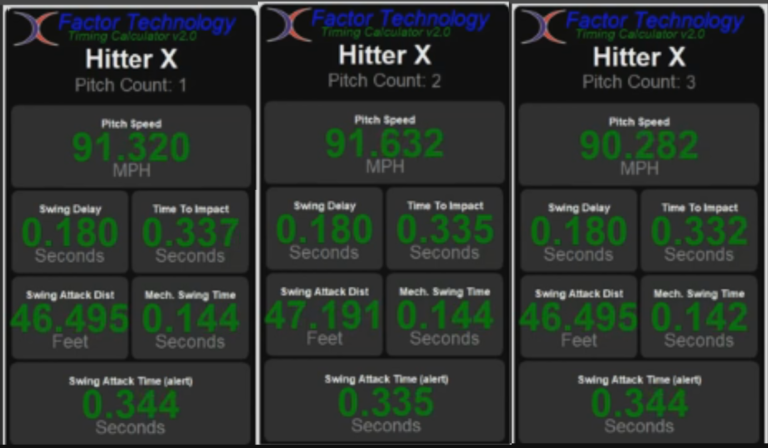
Once you’ve practiced the 3-2-0 drill with a hitter, you’ll discover how quickly you can fade out your instructions of distance measurements, and pitch location. The batter will retain and apply this on their own, precisely hitting inside outside and middle pitches to all fields and then you’ll understand what my tech is able to do. While being instructed and guided initially with a cue, since the batter is perceiving and participating, they become less reliant on the signal, the behavior maintained.
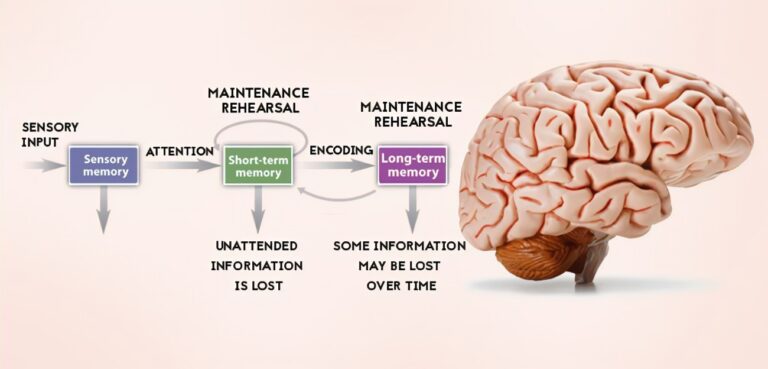
Using cue signals is a very common behavioral learning method for braking bad habits or building good ones, with humans- and- when training animals.
Optimal Contact Points
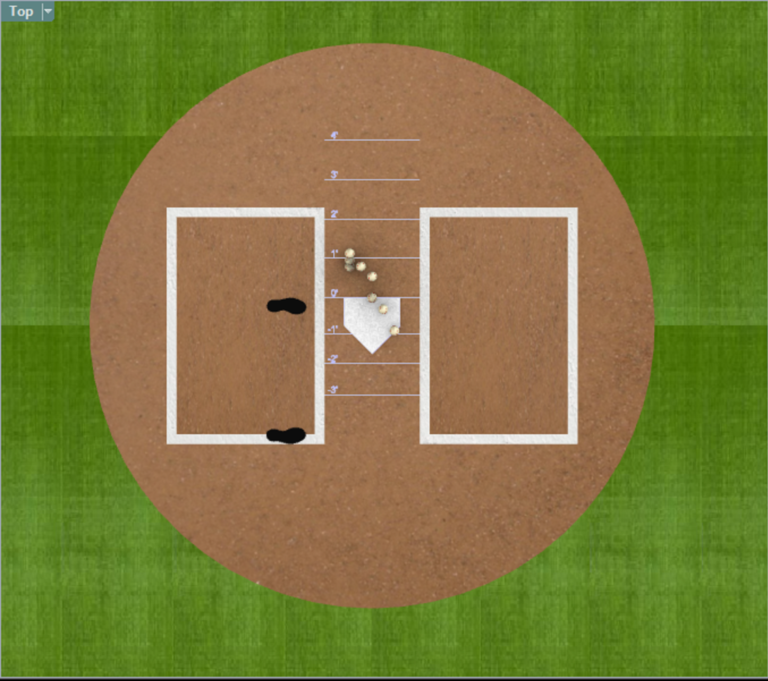
When it comes to contact points, most stop looking at them beyond the inside, out and middle perspective. But high middle and low middle, have different contact depths and different success rates depending on the batter and their personal strengths and weaknesses.
Even the time to swing to different locations changes, as is the distance the pitch travels and the time it takes to arrive there.
One pitch location away from your favorite pitch, belt middle, has a different possible success potential, than, let’s say, middle outside, thigh high. One, you might get a hit on 60% of the time, while the other, exploits a swing flaw resulting in a hit only 20% of the time.
Another example is an outside pitch letter high is much easier to hit than an outside pitch at the knees.
Some view the strike zone in quadrants, others, in 9 zones. I prefer 25. Every pitch location has a different contact depth and vertical bat angle. By viewing the strike zone as 9 zones, different contact depths overlap when we go from 25 locations to 9 larger zones.
Two or three different bat swing time to contact as well as pitch arrival time overlap in a nine-zone graph.
Viewing the strike zone from a 25-contact point measurement perspective, I measure a hitters optimal collision depth for all 25 locations. The criterion for a fixed measurement is confirmed exit velocity, barrel potential, ease of execution (meaning not requiring a dramatic change in swing arc) and success potential, or, how often the contact point would result in a safe hit. You could hit a numbers high outside pitch to a pull field, but you would need to broaden your swing arc, taking more time, and you may have also diminished the success potential of that hit ball, having not gone with the pitch to the opposite field.
Here is an example I found on Twitter posted by someone who was observing the physical progression of the swing at different points but had no interest in contact points regarding competing in the box during a game.
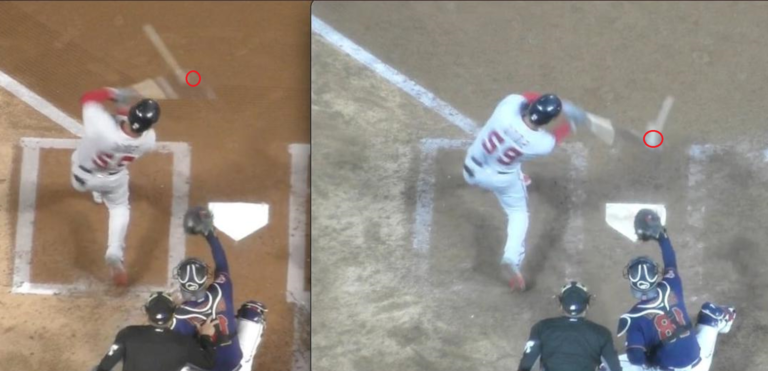
While he was focused on the swing sequence, I was immediately drawn to the two collision points and their depths being optimal- not coincidentally mirroring the optimal contact point measurements I arrived at several years ago.
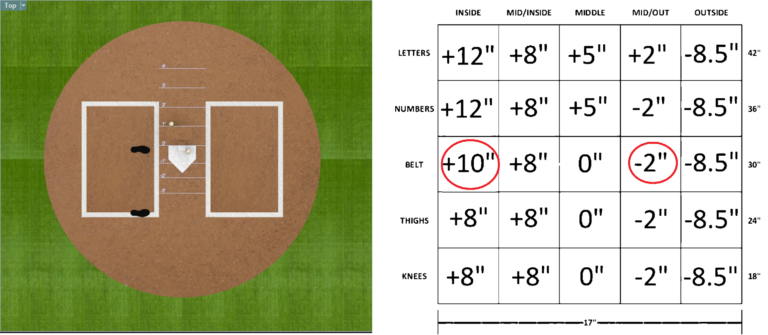
Interestingly, both balls, one met out front and pulled, the other connected with as it passed his foot, deeper in the zone, both had an exit velocity of 105mph.
Many of these contact points are fluid, can be altered, remeasured and custom tailored to fit a specific hitter’s swing shape and intent. Many, like the universally recognized 3, inside, outside and middle, can be considered fixed positions.
Let’s say this batter, Juan Soto, made contact with each of these pitches a foot deeper, resulting in a sub-optimally batted ball and lower exit velocity.
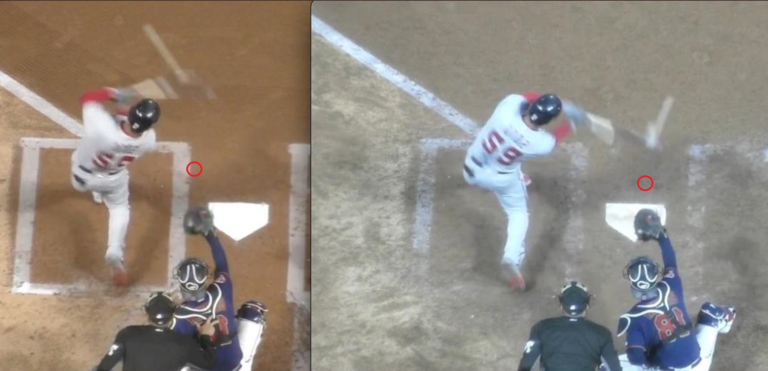
In post at bat analysis, had he a reference as to what the optimal contact point was for each of these locations, he would know he was a foot behind, late, and would have an idea of how to correct his poorly timed swings. It wouldn’t just be a matter of swing sooner or swing later, he would have an exact measurement to work with.
If you don’t think making this adjustment is possible by an elite hitter, think again. Consider the complexity of the problem and the proven solution, people have hit 95mph pitches for home runs! Some were contacted inside, a foot in front of their front foot, others, middle outside a few inches behind their front foot.
Coordinating our movements to intersect with another moving object is a phenomenal feat. Add to the complexity a bat is being swung, which is not part of our body, while a 4-6in space on the bat is to meet this independent object, further compounded by the fact that the bat is traveling a distance of 3 feet, accelerating the entire time from zero to 75mph in 150ms, while the 95mph pitch is decelerating over the course of 54ft of travel to the collision point.
If you don’t believe there is enough time to process ball flight information and make accurate, informed decisions, well, you really aren’t paying attention, because people are doing it.
Three-Dimensional Strike Zones
For as long as I can remember, the strike zone has been observed two dimensionally, up and down, in and out. A few discuss contact depth, but usually in relation to the plate and never in great detail.
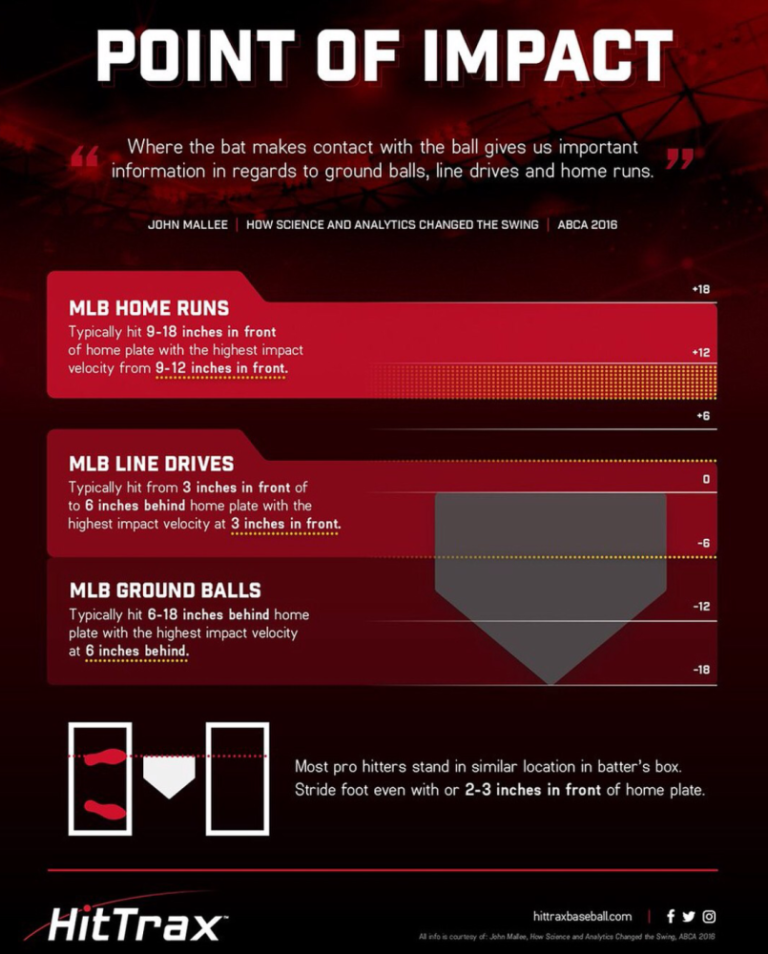
Here’s the problem with this: To say, “for most hard it balls, contact is made 1ft in front of the plate” doesn’t really explain contact points because this doesn’t apply to all pitch locations.
Some pitch locations are better met deeper than farther forward if you’re looking for outcome consistency to be favorable.
But you have hitters trying to make contact out in front, almost without regard for location, with their hardest swings- so you wind up with league wide infield shifts.
Pitches met out front get pulled. Not all pitch locations are meant to be pulled. And at this point in the swing arc, the barrel has passed the batter’s hands, is turning and ascending toward its completion. This results in a lot of pulled grounders.
Another problem with measuring contact points using the plate as a fixed reference, is not all batters stand in the same place in the batter’s box.

When you use the batter’s body as a fixed reference point, contact points move with the batter, they’re not fixed to the plate. The X and Y coordinates does remain the same, regardless of where the batter is standing in the box.
The XYZ Coordinates Matrix
Instead of a traditional perspective of the strike zone in two dimensions, X being horizontal, Y being vertical, let’s imagine it as a rectangular, three-dimensional box, 2 feet wide X, 3 feet high Y, and 3 feet long Z.
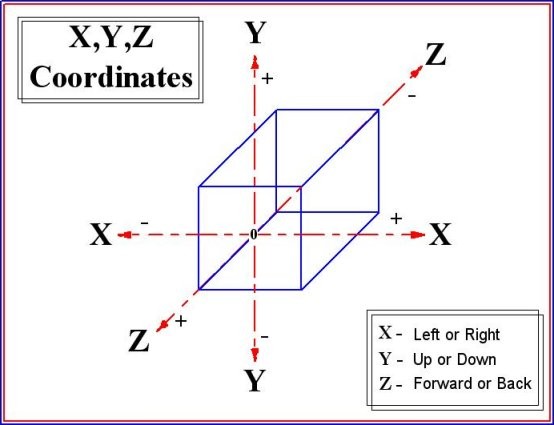
In my 3-2-0 drill description, Y defined the pitch height, belt high. X defined the pitch location, inside, outside or middle. And Z defined the depth of the contact point, 1 foot in front of the front foot for inside, equal to the front foot for the middle and 1 ft behind the front foot for outside pitches, as well as the attack points, 3 feet for inside, 2 feet for middle, and zero feet for outside, all measured from an inertial frame of reference, our front foot.
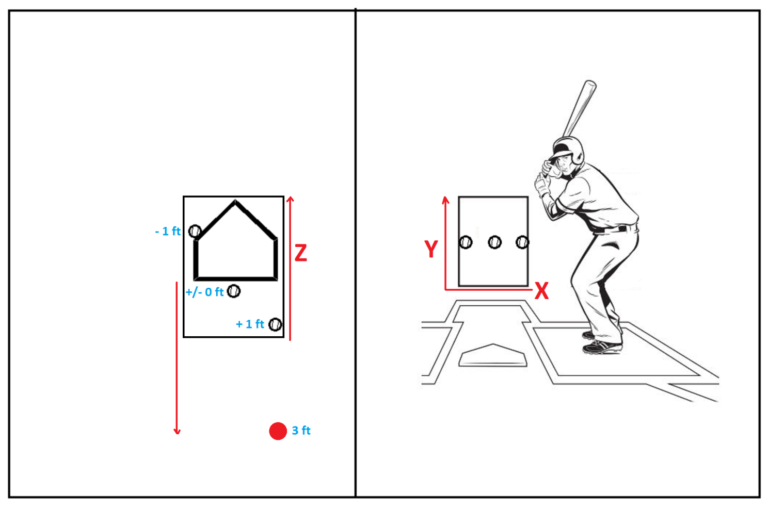
This will come to bear when I discuss contact point and pitch velocity predictions.
Galilean Relativity
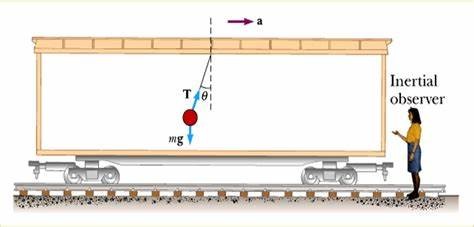
Now I’ll discuss how we use our body as a reference point for both timing and strike zone feel, our physical proximity to the strike zone.
Once a batter gets into the batter’s box and a ball is pitched, they can’t look down at the plate to determine if a pitch is an inside ball or strike or an outside ball or strike. The batter has a practiced, measured feel, of the strike zone up and down, in and out.
Their body and its proximity to the strike zone is their point of reference. When we estimate the velocity of an object or its arrival position in the strike zone, our body becomes one of two points, called inertial frames of reference, that we use to predict the distance the ball is from us, and its rate of displacement.
The second reference point is the pitcher and the ball- that doesn’t appear as a moving object, or we don’t concern ourselves with its movement- until it’s released, which is when we begin processing and predicting its vector- flightpath- and perceived velocity.
Through our visual sense, we’re inertial observers, but because of our gravitational relationship with the pitcher, the ball and the things in the field around us, we too, are a fixed position frame of reference. We cannot look down at the plate as the ball approaches us, as I’ve mentioned earlier, but we do have a measured feel of the strike zone and our contact points.
Again, the bookends of our inertial reference frame are the point of release at one end, our body and then our contact point at the other, once we’ve predicted where the ball and bat should intersect.
You can’t actually see this contact point, but I assure you, you’re targeting it while you plan out intersecting with the ball.
As a sidenote, having mentioned we feel our strike zone and have a memory of our successful contact points, I’ve been collecting data on imperceptible-to-the-eye variances in swing time for batters I’ve tested- as they subconsciously refine their intersection predictions to ensure they meet the ball at specific contact points commensurate with a pitch’s location.
This can be recognized as the speeding up and slowing down inconsistencies of measured swing times with live pitched balls. These standard deviations are much more pronounced in swing times gathered on live ball swings than they are when capturing swing times from tee swings.
Timing and Velocity Prediction
Vision
Our primary motion predictor is our ocular system. Here, we’re the inertial observer. There’s something called the tau effect, an expansion illusion, or how an object, a baseball or softball in this case, appears to dilate or change in perceived angular size as it approaches us.
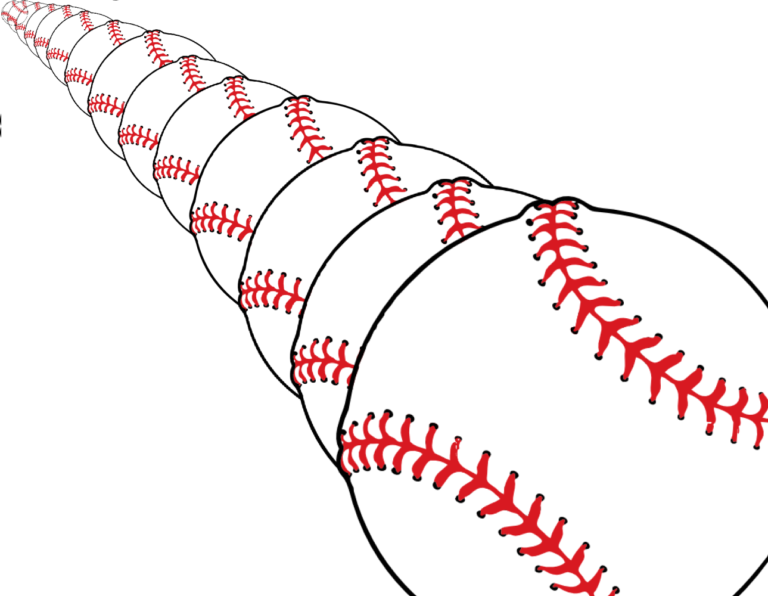
By observing an object of known size at a distance, we perceive the object to be smaller than its known size. We use its rate of dilation over time to estimate its velocity, acceleration or deceleration and its proximity to us to determine when it will arrive.
Tau can be a visual, audio or tactile means of judging object velocity/proximity. Cross-modal tau improves our velocity and proximity estimations by using things like sound, temperature change, and pressure all in combination with our visual perception.
The tau effect, or simply “tau”, can also include stationary background objects and information, such as the pitcher, the mound, and other fixed objects, to predict the rate of displacement of the ball.
For hitters, I have recommended a wide-spread visual perspective, see everything, focus on nothing approach, in favor of a narrow, acutely focused on the ball, perspective.
Universal Gravitation
Continuing with our inertial reference points and the tau effect, but looking at them a little differently, there’s universal gravitation. This is our feel relationship with other objects in our environment, or umwelt. These objects don’t have to be moving for us to “feel” their presence.
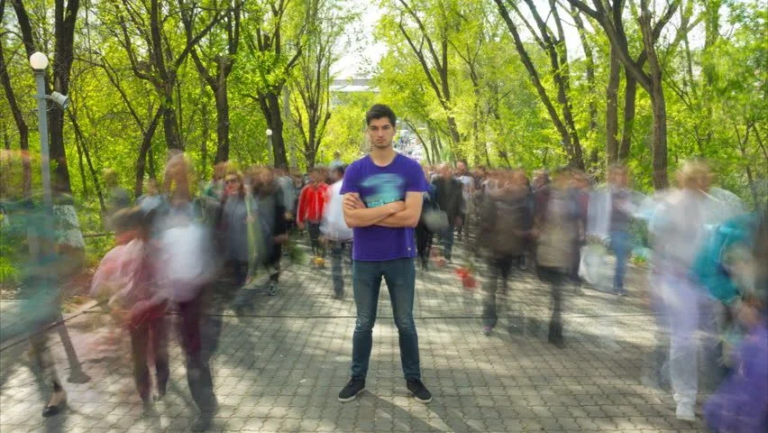
We have an energetic relationship with all things, including a baseball. We feel a baseball the same way we feel the walls around us or people as they enter a room or invade our space. Coach’s talk a lot about swing space. We experience this when we hit off batting tees because a ball we would normally be swinging at when it is some distance away, while on a tee, is right on top of us.

When a pitched ball is released and begins approaching us, along with our ocular system, we’re processing the rate at which our space is being invaded. We feel it, just as we can walk backwards towards a wall and feel its presence nearing us.
Have you tried Virtual Reality baseball programs? Did it “feel” real? Aside from the depth coordinate being grossly inaccurate, meaning timing of pitches is not transferrable to an ecological event, there is an absence of presence or physical or gravitational relationship with virtual objects.
Theoretical Motion Analysis and Outcome Predictions
The Fourier Transform
For a long time, I’ve studied brain function, memory encoding and visual processing. I’ve even begun studying the effects of LSD on the brain and ocular system to better understand if “seeing trails” was a visual representation of energy field disruptions of it is just the chemical effect slowing our visual system down.
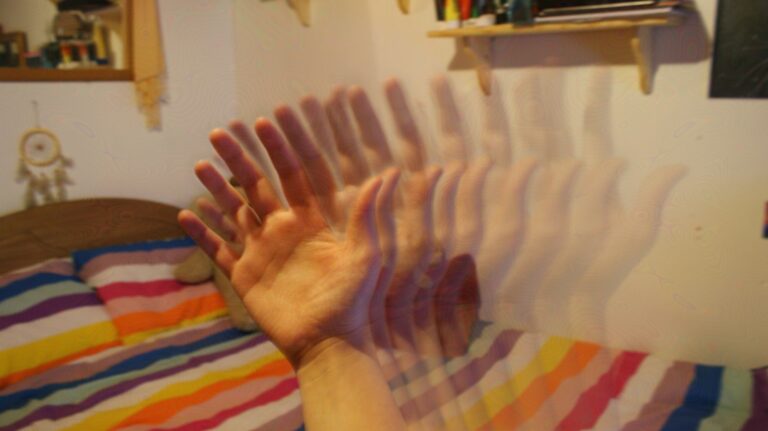
New research indicates that smaller animals, such as birds, dogs, cats and even human children, perceive the world at a higher frame rate than the rest of us. As a result, these smaller animals may be living in a state of Matrix-like bullet time, in which everything appears to be moving in slow motion.
Years ago, while studying athletic movement, I came upon the work of Nicolai Bernstein.
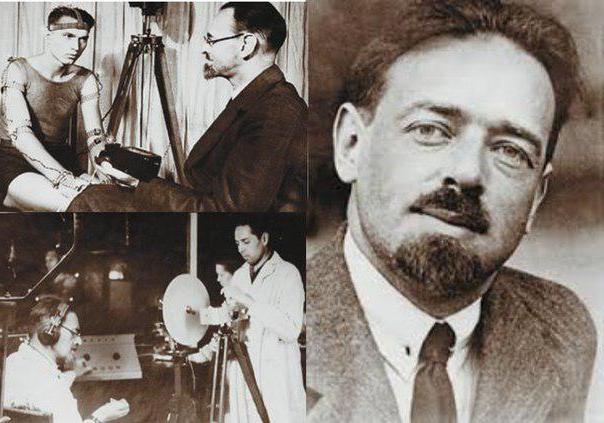
Nikolai Bernstein was a well-known neurophysiologist, who pioneered the use of an algorithm known as the Fourier Transform to analyze human movement patterns.
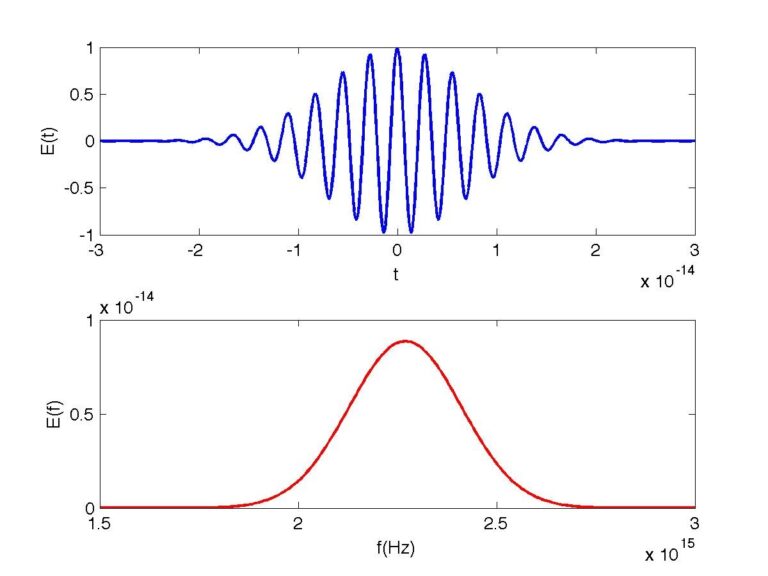
The Fourier Transform is a mathematical transform that expresses a function of time as a function of frequency. The result of this analysis enabled him to track and predict movements.
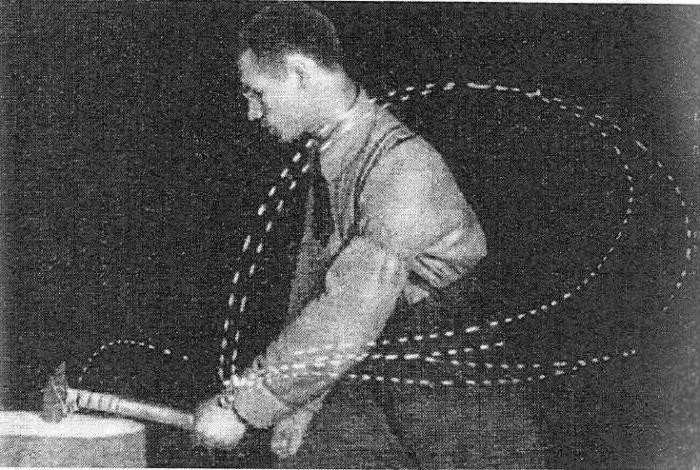
He used special devices, filmed and observed the movements of people hammering, dancing and performing athletics. In this picture, Bernstein painted white dots on dancers and filmed them dancing against a black background.
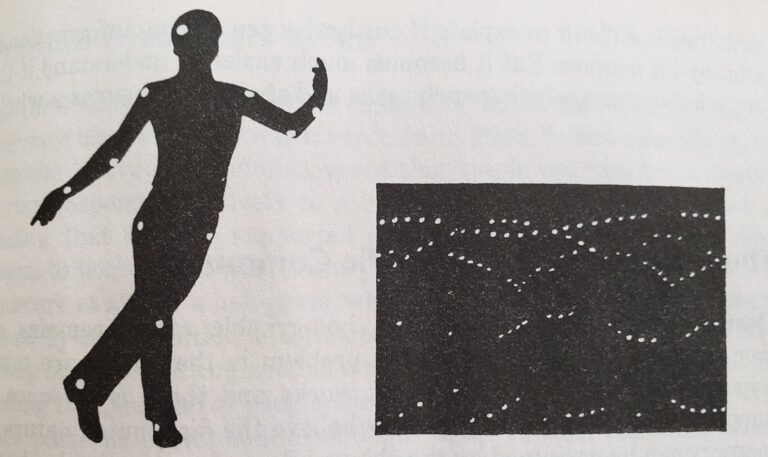
When he converted their movements into a language of wave forms, he discovered they could be analyzed using Fourier mathematics predicting movement patterns within fractions of an inch.
Our brain does very much the same thing. It takes visual information and converts it to wave form. Everything is energy. I theorize we see disruptions in energy fields. A curve ball, for example, is disrupting energy fields, moving molecules. And just as our brain rejects blurred images, replacing them with “predicted” images to produce, to our conscious, thinking brain, a seamless representation of the event, our brain registers the disruptions in energy fields, but instead of seeing them in our conscious image, our brain instead uses these wave forms to analyze motion and predict outcomes.
Conclusion
There is still much to learn about timing and swing decisions. Many coaches today at the professional levels do not believe there is enough time to process a pitched ball to make accurate timing decisions. I completely disagree with them. Not only have hitters proven they can identify a pitch’s location and velocity by “going with pitches”, I’ve done the math.
Committing to your swing, swinging as hard as you can to one spot without spending time gathering more valuable, actionable information on the pitch, then not targeting a spot commensurate with the pitch’s velocity and location isn’t a winning strategy. Resigning hard hit balls to luck is the acme of banality.
Whether you’re consciously aware of it or not, when you make contact with a pitch and you’re on time, you’ve created a reference point for when you’ve attacked a pitch and where you made contact with it. An optimal attack and optimal contact point; like shooting basketballs into the hoop.
No one knows when they must swing at a 100mph pitch until they’ve done it. Then it becomes repeatable by recalling, from memory, success references.
This should be your main takeaway from my 3-2-0 drill.
Our brain taught us how to do complex things, like the firing on and off hundreds of muscles, just to take a single step, before we could even communicate.
Our brain seamlessly fills in gaps in visual information for us.
It can, in 400ms, capture an object, determine its vector, rates of motion and deceleration, to predict its resultant velocity as it arrives at a plotted-out intersection point, and recall how long it takes to swing a bat, coordinating its arrival with the arrival of another object. The more time spent processing, the more information gathered, the better the prediction.
Can timing decisions be trained? Of course. Every ball player has been introduced to varying pitch types, locations and speeds. They swing and miss until they hit the ball. Having hit it, they have a frame of reference to work from. Then they hit it again. The more they practice, the more often they succeed, the deeper and more refined the memory becomes.
This is the subject of my life’s work of 20-years, my multiple patents, with more on the way, for technologies I’ve featured in this presentation along with several others.
Errorless learning is a much better, faster method of deep memory encoding. There are many academic studies to support this.
Please send questions and comments to:
